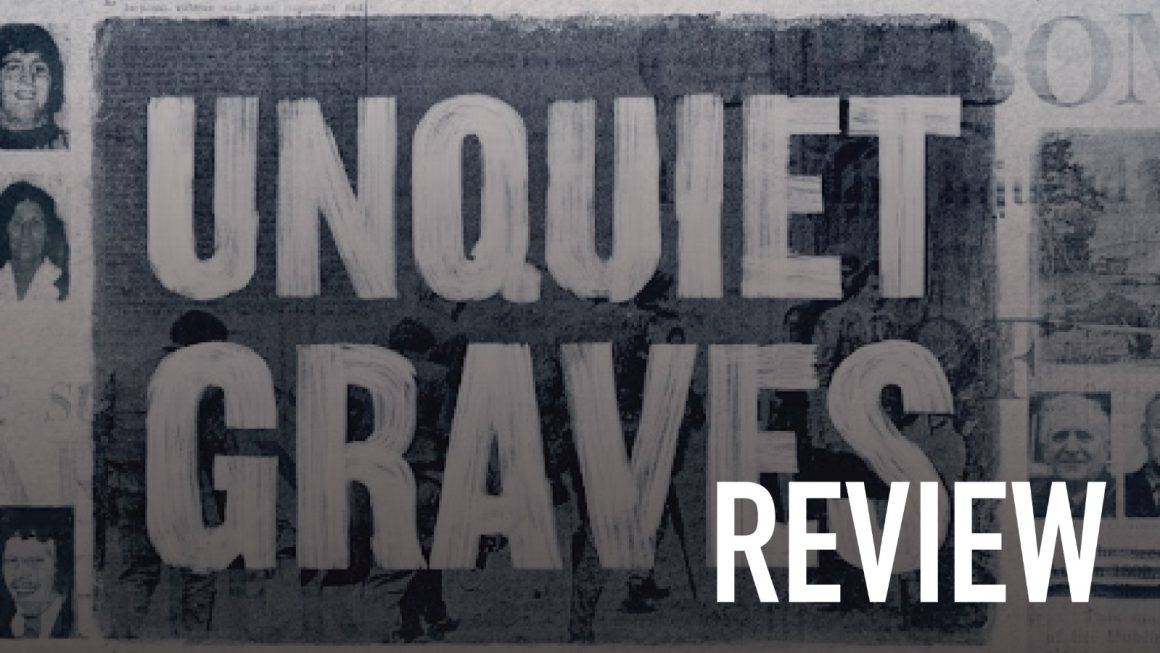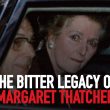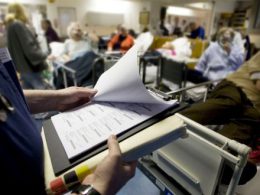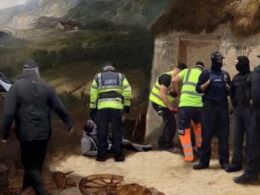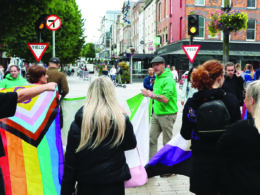Unquiet Graves opens with a harrowing re-enactment of the murder of two young men, Colm McCartney and Sean Farmer, in 1975. Returning from a Gaelic football game in Dublin, the two were stopped at a ‘British Army’ checkpoint near the village of Newtownhamilton in County Armagh and shot dead. Throughout the documentary families of victims detail the horrific experiences suffered at the hands of loyalist paramilitaries and the British state.
The documentary gives a detailed look into the reality of state collusion, and the devastation wrought on working-class people’s lives as a result. It focuses in particular on the role of the Glennane Gang in 1970’s Tyrone / Armagh, a gang composed of RUC officers, British Soldiers and UDR men alongside loyalist paramilitaries — who are believed to be responsible for 120 killings, including the infamous Dublin / Monaghan bombings and the Miami Showband massacre.
Part of what the documentary uncovers is the lie that British imperialism purely intervened as a benign peacekeeping force between two “warring tribes”. This narrative is exposed thoroughly throughout the film by accounts of victims and the testimony of John Weir. Weir, a sergeant in the RUC’s Special Patrol Group (SPG) counter-terrorist section and member of the UVF, details the active collaboration between security forces and loyalist paramilitaries.
The British ruling class was acting to defend its interests. The British Army was sent to Northern Ireland to protect property and the profits of the British capitalists, not to protect the interests of either Catholic or Protestant workers. Even in their own words this reality is shown. General Frank Kitson, who was a key figure in the British Army’s intervention into the North, stated:
“Everything done by a government and its agents in combating insurgency must be legitimate. But this does not mean that the government must work within exactly the same set of laws during an emergency as existed beforehand. The law should be used as just another weapon in the government’s arsenal, in which case it becomes little more than a propaganda cover for the disposal of unwanted members of the public.”
The documentary details the horrific spiral of sectarian murders in the area. On 5 January 1976, six Catholics – three Reavey brothers and three members of the O’Dowd family – were murdered by the Glenanne gang in south Armagh. One day later, the Provisional IRA retaliated, using the cover name of the South Armagh Republican Action Force. They stopped a workers’ bus on a country road near Kingsmill. They asked all 12 men on the bus their religion, ordered the only Catholic to walk away, and proceeded to execute the remaining men. This resulted in 10 deaths and one survivor. There are suspicions that state agents may have been involved and that this may have impeded the investigations at the time. In response, the Glennane Gang formulated a plan to massacre Catholic school children and their teachers in the Armagh village of Belleeks. This plan, alleged by John Weir, was instigated by British Intelligence operatives. It would not come to fruition, as the Belfast UVF stepped in, deeming it as going ‘too far’, risking all out civil war.
What is unfortunately absent from the documentary, however, is the response from working-class people to this escalating crisis – a response which would be decisive in preventing any slide into all out civil war. After the Reavey / O’Dowd murders and the Kingsmill massacre, Newry Trades Council immediately called a strike which closed most of the factories and workplaces of the town and brought thousands onto the streets. The overwhelming mood for peace was harnessed instead by the Peace People in the summer and autumn of 1976. A series of rallies were held across the North. 20,000 turned out at Belfast’s Ormeau Park, 30,000 on the Shankill, 25,000 in Derry and many thousands more in Antrim, Coleraine, Strabane, Craigavon, Dungannon, Newtownards, Ballynahinch and elsewhere. These were not insignificant & disconnected events – instead they are a key component of this. The working class exerted itself and pushed back the tide of sectarianism.
Many of those who participated in the film are campaigners for truth and justice. This documentary is part of the process of shining a light on the past and the role of the state colluding with sectarian forces. It spends some time detailing the struggle to access documentation and files, including attempts for international bodies to investigate. Unfortunately the British State and all sectarian actors in the troubles have made clear that it is only their narrative that will be told.
Socialists support a genuine accounting of the past but have no illusions that the British State, nor any sectarian force, can deliver an honest account. We do however have confidence in working-class people to expose the truth and expose these forces to real scrutiny. This could mean some form of wide-ranging enquiry into the troubles, which would not be in the hands of the state or establishment parties but made up of respected trade unionists and those with a record of campaigning on these issues from the standpoint of ordinary people, including human rights groups.





